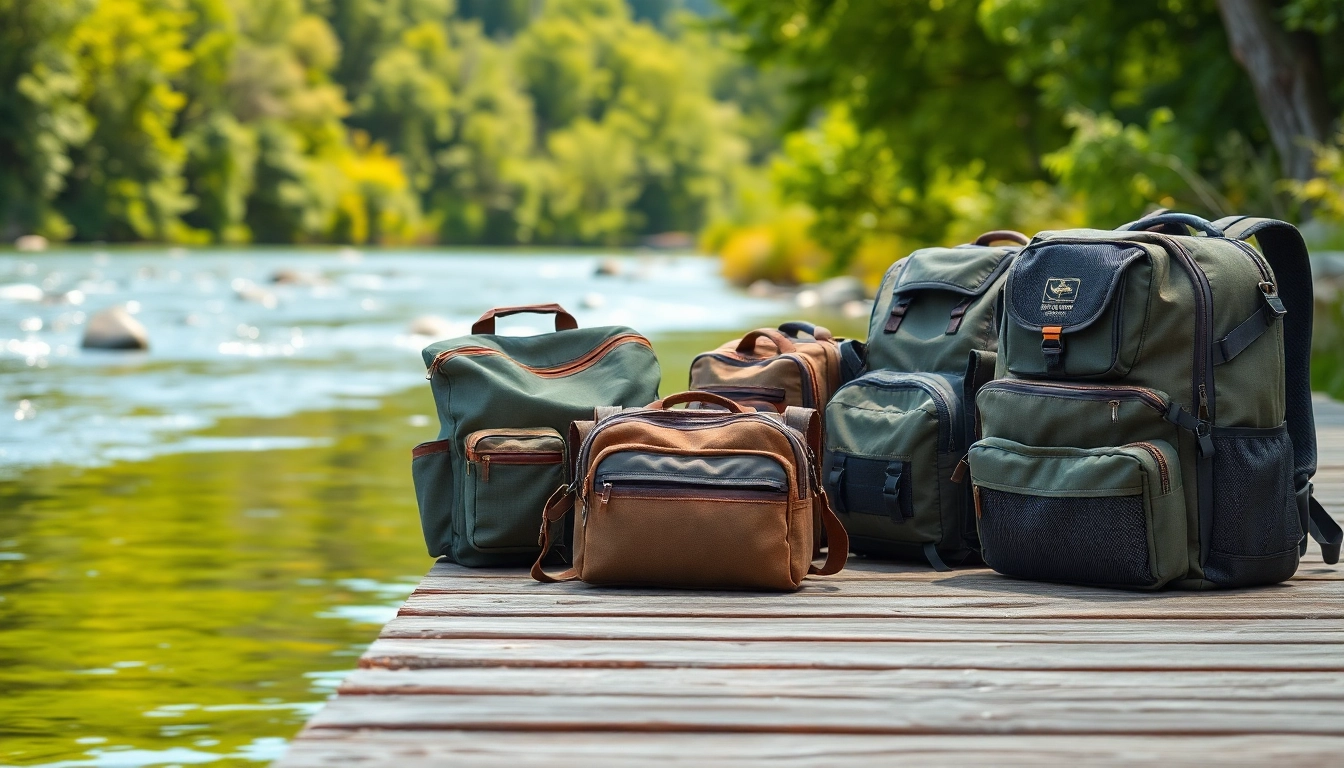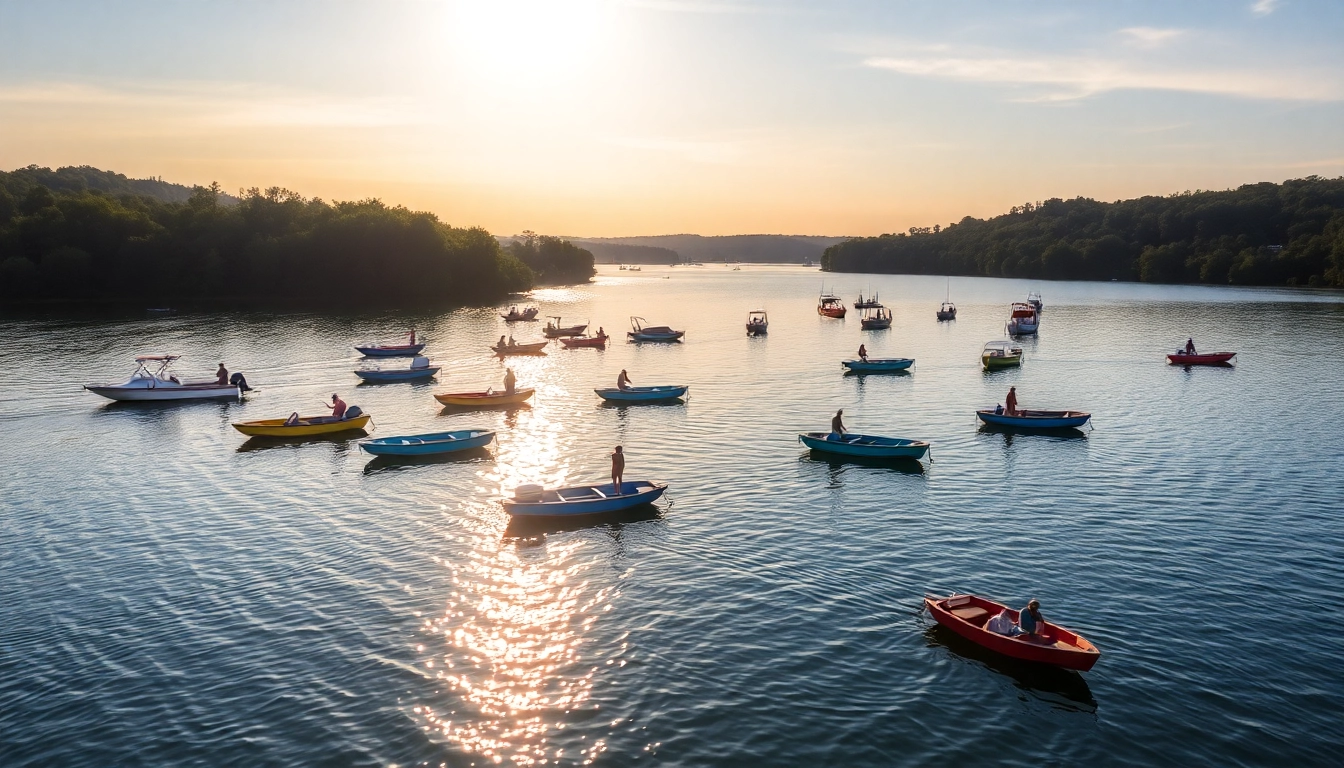1. Understanding the Different Types of Fly Fishing Bags
1.1 Fly Fishing Backpacks: Overview and Benefits
In the world of fly fishing, versatility and ease of access to gear can make or break your experience. Fly fishing bag come in various designs, each tailored to meet specific needs. Fly fishing backpacks are among the most popular options, providing the capacity to carry a range of essential gear. Typically larger than other types, they are ideal for longer excursions, allowing anglers to pack everything from flies to food and water comfortably.
One of the primary benefits of using a fly fishing backpack is organization. Many modern backpacks come equipped with multiple compartments, pockets, and attachment points to secure rods, nets, and reels, while their adjustable straps ensure a snug fit that balances weight against your back. Whether you’re wading through a creek or trekking to a remote fishing spot, a well-designed backpack helps you manage your gear efficiently.
1.2 Chest Packs vs. Sling Packs: Which is Right for You?
When it comes to deciding between chest packs and sling packs, consider the style of fishing you’ll be pursuing. Chest packs sit atop your torso, allowing quick access to flies and tools without needing to remove your pack. This design promotes an efficient fishing experience, especially for those who prefer to remain mobile and engaged with their surroundings.
Sling packs, on the other hand, offer flexibility as they are worn over one shoulder and can be swung around to the front for easy access. They typically provide ample storage but can occasionally lack the quick-draw advantage offered by chest packs. Ultimately, your choice should depend on personal preference and fishing scenarios.
1.3 Hip Packs: Compact Solutions for Minimalist Anglers
For minimalist anglers, hip packs present a compact option that prioritizes mobility and convenience. Worn around the waist, these packs allow you to carry your essential gear without the bulk of larger backpacks. They can hold essential items such as tippet, flies, and other small tackle, making them ideal for those who prefer light packing on close-to-home rivers or streams.
Hip packs often come equipped with features like water bottle holders and attachment loops, enhancing their functionality. Likewise, their lightweight design minimizes fatigue, allowing you to focus entirely on your fishing experience. The trade-off is less storage space compared to larger packs; therefore, they are better suited for shorter outings.
2. Key Features to Look for in a Fly Fishing Bag
2.1 Storage Capacity: How Much Do You Need?
One of the first factors to consider when selecting a fly fishing bag is the storage capacity. Different trips require different levels of equipment. For instance, a full day of fishing might necessitate more flies, tools, and lunch, whereas a quick evening trip may only need a basic set of flies and a few accessories. Thus, understanding your typical fishing needs will help in determining the right capacity for your bag.
Many backpacks and packs come with modular designs that allow you to expand storage with additional pouches and pockets. This feature provides flexibility depending on your fishing objectives. Always aim for a bag with room for extra items, as you never know when a great fishing trip will turn into a longer adventure than expected.
2.2 Material Durability: Waterproof vs. Water-Resistant
The materials used in fly fishing bags can dramatically affect their performance and durability. Waterproof materials provide assurance that your gear stays dry, particularly when navigating wet environments or during unexpected rain. Look for bags with sealed seams, waterproof zippers, and durable fabrics such as nylon or polyester.
Water-resistant bags can offer a degree of protection but are not entirely reliable in heavy rains or submersion. If you frequently fish in challenging weather conditions, investing in a waterproof bag may be beneficial to safeguard your essentials.
2.3 Comfort and Fit: Importance of Adjustable Straps
Comfort cannot be overlooked when choosing a fly fishing bag. Bags with adjustable straps not only help achieve a snug fit but also prevent fatigue during long days on the water. Look for ergonomic designs that distribute weight evenly across your shoulders or hips to support extended wear.
Many bags also feature padded backs and breathable materials, which enhance overall comfort. Conducting thorough research on reviews can provide insights into how different bags hold up after prolonged usage, assisting you in making a well-informed decision.
3. Comparing Popular Fly Fishing Bag Brands
3.1 Simms Fishing: Quality and Innovation
Simms Fishing is lauded for its commitment to quality and innovative design. Their range of fishing packs includes ergonomic designs tailored for both comfort and utility. Special features like internal foam contouring and ample storage options make them a top choice among serious anglers.
Products like the Simms Dry Creek Z Backpack show their focus on functionality, combining ample space with water-resistant materials for maximum durability.
3.2 Orvis: Classic Style Meets Modern Functionality
Orvis is a brand that has successfully merged traditional craftsmanship with modern functionalities. Their collection includes various fly fishing bags, from vests to hip packs. Orvis bags are known for their classic style, often featuring high-quality materials that match their durability.
The Orvis Waterproof Hip Pack, for instance, showcases a blend of user-friendly design and superior materials to keep your gear secure during wet conditions. This emphasis on style doesn’t sacrifice practicality, making it a favorite for many anglers.
3.3 Fishpond: Eco-Friendly Options for Anglers
Fishpond is known for its eco-conscious approach to tackle, producing bags and other gear from recycled materials. This commitment to sustainability appeals to anglers who are environmentally conscious without compromising on performance.
The Fishpond Thunderhead Submersible Backpack exemplifies their innovative designs by combining water-resistance with a recycled build, catering to the needs of modern anglers focused on environmental responsibility.
4. Tips for Organizing Your Fly Fishing Bag
4.1 Essential Gear to Pack for a Successful Fishing Trip
To maximize your fishing experience, careful packing is essential. Start with a well-planned checklist that includes the following:
- Fly boxes containing assorted flies
- Leader lines, tippets, and tools like nippers
- A multi-tool or forceps for handling hooks and fish
- Water, snacks, and sun protection items
Ensuring you have all necessary gear before heading out not only improves your chances of success but also enhances your overall comfort while fishing.
4.2 Efficient Packing Techniques for Quick Access
Efficient packing techniques can make a significant difference in your fishing outing. Utilize different compartments and ensure items that you use frequently, such as tools and flies, are easily accessible. Packing in a way that allows you to retrieve these items quickly without digging through your bag is essential.
Try segmenting your gear using small pouches or cases to further enhance organization. Labeling these pouches can eliminate confusion and streamline your fishing process.
4.3 Regular Maintenance: Keeping Your Bag in Shape
Caring for your fly fishing bag is essential for prolonging its life. Regularly inspect your bag for signs of wear and tear, and address any issues, like frayed straps or broken zippers, promptly. It’s also advisable to clean your bag periodically, especially after trips involving muddy or wet conditions, to maintain its integrity.
An investment in minor maintenance can drastically enhance the longevity of your bag, keeping it ready for future adventures.
5. Customer Reviews: What Fishermen Are Saying About Their Bags
5.1 Analyzing Top Customer Favorites on Performance
Customer reviews are invaluable when assessing the performance of fly fishing bags. Anglers typically appreciate durability, comfort, and ease of organization. Bags like the Fishpond Thunderhead and Simms Dry Creek often receive high ratings for their water resistance and practical design, which enhances user experiences.
5.2 Common Complaints and How to Address Them
Common complaints amongst users often relate to insufficient storage, weight issues, or comfort. When selecting a bag, it’s crucial to pay attention to these reviews. For example, some customers may report that certain bags feel bulky; therefore, reading about users’ experiences can guide you toward brands that prioritize comfort and practicality.
5.3 Real Fishing Experiences Shared by Users
User experiences shared on forums and review platforms can provide insightful context for how bags perform in real fishing conditions. Many anglers share their thoughts on how a particular bag held up under various weather conditions, revealing its strengths or weaknesses.
Overall, tackling fishing excursions with the right gear is vital, and obtaining firsthand accounts can help in determining the best fit for your needs.



